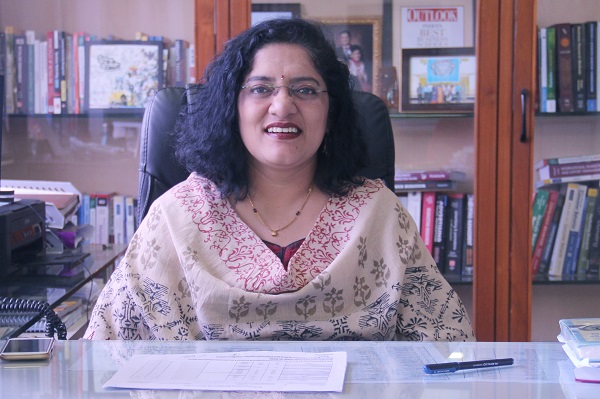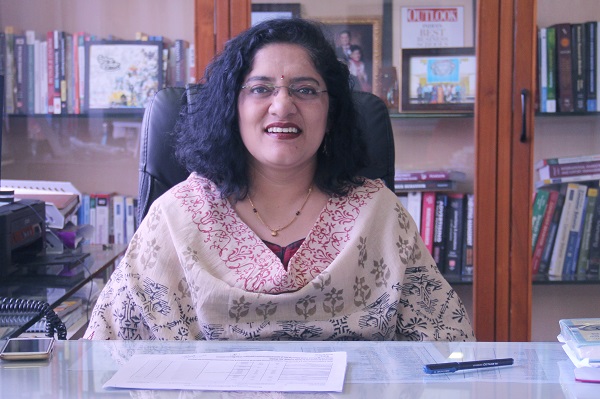
With the advancement in technology and Google search engine becoming the new-age Guru, there has been tremendous pressure on educational institutes to revamp their teaching methodologies.
We all know for the fact that traditional learning which typically comprises of classroom lectures, if happens through one-way interaction then it fails on two counts; one, delivery and two, understanding. In this setting, at times, students are compelled to sit and listen to the faculty, and then cram all the concepts which actually results in rote-learning. It doesn’t really develop soft skills such as critical thinking, problem-solving and decision-making, which are otherwise crucial to survive and thrive in the current as well as future job market. Traditional learning is also based on the premise that one size fits all, meaning that all students have same level of capability and hence, common curriculum, pace and learning style is applicable to all.
In the new internet age, the whole process of learning is undergoing a sea change. With the ease of access to information, knowledge acquisition is not limited to class-room learning. In fact, there is huge chunk of information available on the web which is just a click away.
Because of changes in technology, students are looking for quick and latest information. Unless and until the Professor is well equipped and well informed, there won’t be much takeaway for a Gen Z student from the class room. Also, one has to remember that although there is no substitute for face to face live interaction, one should definitely try and make the learning experience interactive and more meaningful using new-age technology.
New-age learning using technology encourages students to explore, experiment and question instead of memorization. It also incorporates different forms of learning to make academics more interesting for students and empower them to learn according to their learning capability, style and more importantly at their own pace.
Let’s take a look at some of the new-age learning methodologies:
Interactive Learning
With the hyper growth in digital technology and virtual communication, new-age students expect interactive learning to be an integral part of their learning experience. It can be defined in two different contexts. The first one involves encouraging student participation. Instructors engage students in a number of ways such as group discussions, hands-on projects, role plays, discussion through case studies, etc. Here, the focus is on learning by doing, and instructor acts more as a facilitator than a mere transmitter of learning.
The second context is closely associated with digital learning. The proliferation of the internet, social media, mobile devices and smart technologies has been a key enabler of digital learning. Some of technology-driven interactive learning tools that many institutes are incorporating in their pedagogy are:
- Digital classrooms equipped with desktops/laptops, interactive whiteboards, projectors and video conferencing tools.
- Live and recorded streaming of educational videos and lecture from industry experts, foreign university faculty, etc.
- Multimedia presentations with dynamic slides embedded with online audio-visual links to study materials, questionnaires, quizzes, etc.
- Online community and group discussion forums where students and teachers can exchange opinions.
- Classroom podcast to correspond with what students are learning.
- Student-run blogs on institute’s website.
- Gamification of lessons by incorporating game design and elements.
In today’s era, technology and digital disruption offer multifarious opportunities to educators to bring innovation in interactive learning so as to make it an enjoyable experience for students.
Blended Learning
Blended or hybrid learning combines the elements of traditional classroom teaching with online learning tools. It is gaining popularity because it helps students to combine the best of both worlds for effective learning and deeper engagement. It retains the human touch and face-to-face interaction in education, but at the same time promotes concept building and enquiry-based learning among students. It also reduces burden on the faculty and leaves more time for them to focus on academic research/collaboration and student interaction.
The beauty of blended learning also lies in the fact that it can be modified to different learning models, depending on the academic goals of the institute and the availability of resources. Two of the most common blended learning styles are:
- Blended Face-to-Face Class: A majority of teaching is done in the classroom, but some activities are replaced by online activities.
- Blended Online Class: A majority of teaching is done through online classes, but some amount of face-to-face interaction happens in a physical set up.
Given its benefits, blended learning is touted as the future of education, especially in India which has world’s largest population in the age bracket 5-24 years and boasts of the third-largest higher education system after the United States and China.
Self-Learning
Self-learning is an approach where students take charge and ownership of learning. Students set their own learning goals, schedules and outcomes. They also decide what pedagogy they would prefer. The instructor merely acts as a mentor. Self-learning basically enables students to customize education to suit their learning needs.
Once they complete a level or a module, they move on to the next one at their convenient speed. is usually done through online or distance courses. One of the most popular models of self-learning is a Massive Open Online Course (MOOC) where students can take online courses in their preferred subjects from the best institutes in the world. Self-learning is a viable option for students who can’t attend traditional classes due to personal or professional constraints, are residing in remote locations, want to access foreign university courses without relocating to another country or want to build a specific career skill set.
Going forward, interactive, blended and self-learning approaches can reinvent the education sector like never before. It’s about time that institutes start transforming themselves in this direction to survive and thrive.
This article is authored by Dr. Asmita Chitnis, Director Symbiosis Institute of International Business (SIIB).






















